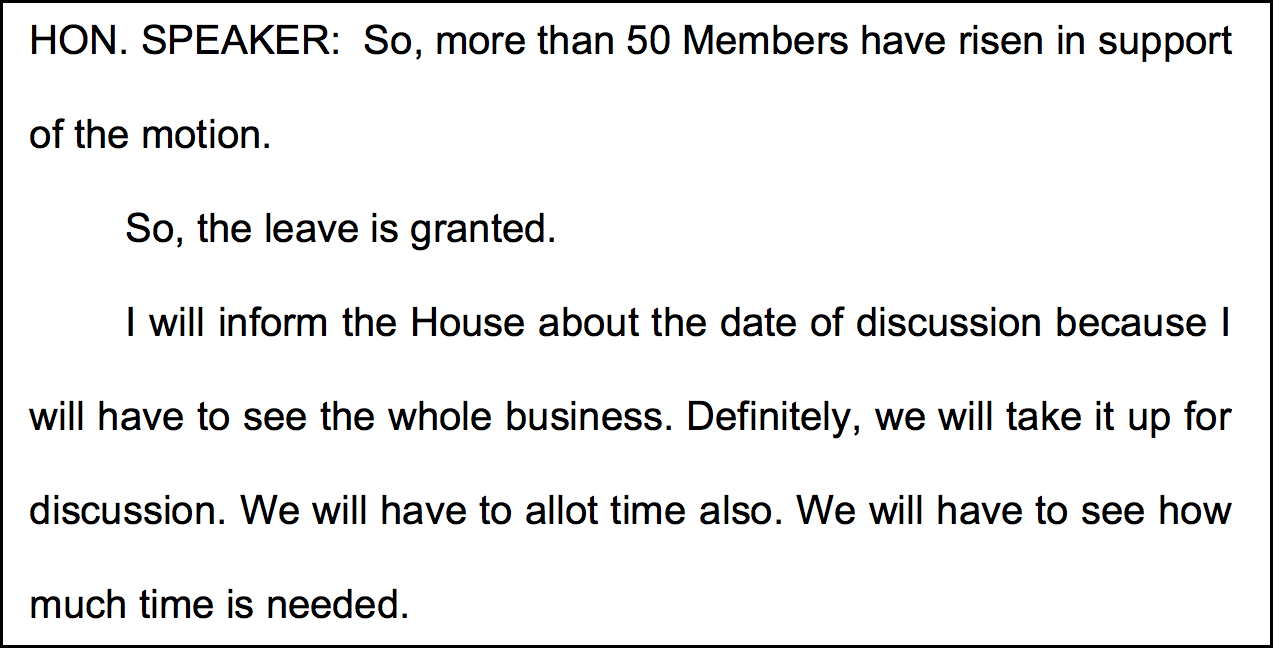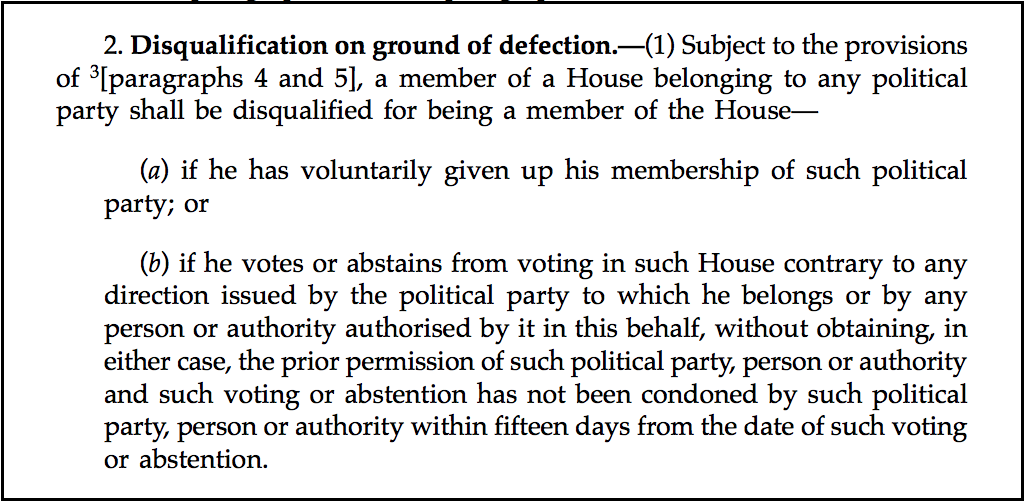The NDA government led by the BJP is facing a No-Confidence motion today after the Speaker accepted the notice given by the opposition. But what is a No-Confidence motion? What does a ‘whip’ mean? Here is your guide.
[orc]The No-Confidence motion
In the parliamentary system that is followed in India, the government must always enjoy majority in the lower house or the Lok Sabha. In other words, it has to demonstrate its strength on the floor of the house. Any member of the house can move a ‘No-Confidence’ motion against the government. If the motion is accepted by the Speaker, the government has to defeat the motion to remain in power. In case the ‘No-Confidence’ motion is passed by the house, the council of ministers (government) has to resign. Conversely, the Prime Minister can move a ‘Confidence’ motion and prove his strength. A ‘No-Confidence’ motion is usually moved when a government is seen to have lost majority in the Lok Sabha. Sometimes, it is also moved to bring important issues to light or to highlight failures of the government.
Moving a No-Confidence motion
As per rule 198 of the Rules of Procedure and Conduct of Business in the Lok Sabha, any member of the house can move the motion. He/She has to give a written notice of the motion by 10am on any day when the house is in session to the Secretary General of the Lok Sabha. If the notice is received after 10am, it will be treated as received the next day of sitting. It is important to note that no reasons need to be given for moving this motion.
If the Speaker is of the opinion that the motion is proper, he/she will read the motion to the house. A minimum of 50 members have to support the motion for it to be accepted. If less than 50 members support the motion, the member who moved the motion will be informed that the motion is not accepted. In the current case, MPs from the TDP moved the motion on 18th July 2018. One such motion was taken up and since more than 50 members supported the motion, it was accepted.

What happens after the motion is accepted?
Once the motion is accepted, the Speaker will announce a day on which the discussion & voting will take place. Such a day should be within 10 days from the day the motion is accepted. In the current case, the discussion is taking place today, just 2 days after the motion is accepted. It is also listed in the business for the day.

Discussion & Voting
The Speaker can allot a day or days for the motion to be discussed. The Speaker will also prescribe a time limit for each party for their speeches during the discussion. Usually, the time limit is proportional to the strength of the party in the house. Once the discussion is complete, the Speaker will conduct the voting of the motion at a specified time. The voting may be taken up through ‘Voice Vote’ or ‘Division of Vote’ or other means. If the ‘No-Confidence’ motion is passed, then the government of the day has to resign.
What is Whip?
Whip is neither defined in the constitution nor in the rules of the Lok Sabha. But it is recognized as a part of parliamentary convention. In the system followed by the UK Parliament, the Whip is clearly defined along with their duties. In India, every party appoints a Chief Whip whose duty is to ensure attendance of the party MPs in the house for important motions like the ‘No-Confidence’.
What is ‘Whip Issued’?
Whenever it is said that a ‘Whip is issued’, it means that a direction is given by the party’s whip to all the MPs to vote in a particular manner. Any violation of these directions can result in disqualification of the MP. The constitution was amended (52nd Amendment) in 1985 to address political defections. The Tenth schedule was added to the constitution through this amendment that lay down criteria for disqualification of MPs/MLAs. One of the grounds for disqualification is abstaining from voting or voting against the party direction.

Hence the whip becomes very important. It has to be noted that disqualification is not applicable if the MP defies the whip with the prior permission of the party or if the party condones the MP’s action. But the catch here is that the whip has to be served on the member. In other words, written directions have to reach the MP. Sometimes, parties paste the whip at the MP/MLA’s residence if he/she is missing or not reachable.
Details of some of the earlier instances of ‘Confidence Motions’ are given in the annual report of the Ministry of Parliamentary Affairs.


